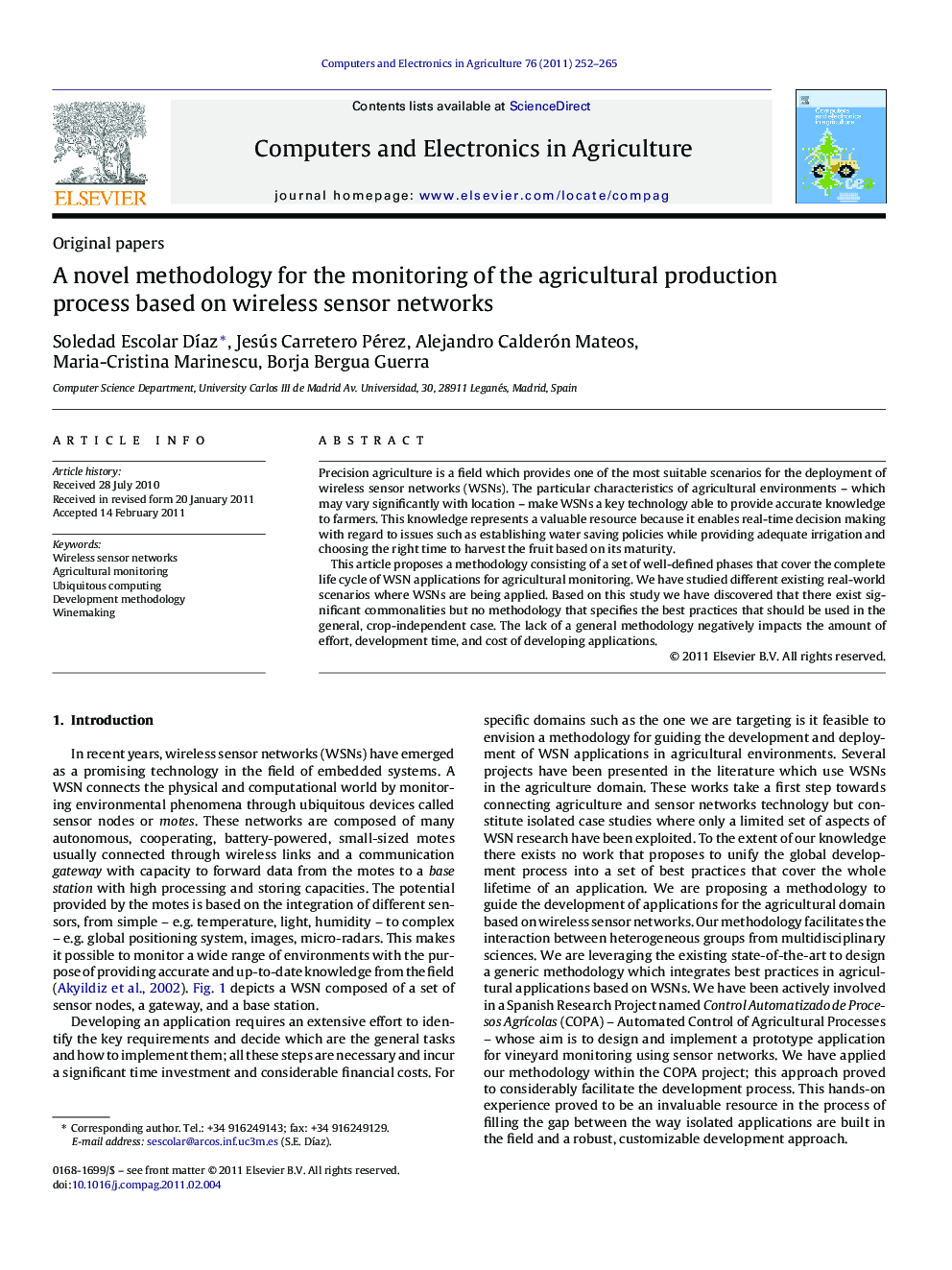| Article ID | Journal | Published Year | Pages | File Type |
|---|---|---|---|---|
| 84652 | Computers and Electronics in Agriculture | 2011 | 14 Pages |
Precision agriculture is a field which provides one of the most suitable scenarios for the deployment of wireless sensor networks (WSNs). The particular characteristics of agricultural environments – which may vary significantly with location – make WSNs a key technology able to provide accurate knowledge to farmers. This knowledge represents a valuable resource because it enables real-time decision making with regard to issues such as establishing water saving policies while providing adequate irrigation and choosing the right time to harvest the fruit based on its maturity.This article proposes a methodology consisting of a set of well-defined phases that cover the complete life cycle of WSN applications for agricultural monitoring. We have studied different existing real-world scenarios where WSNs are being applied. Based on this study we have discovered that there exist significant commonalities but no methodology that specifies the best practices that should be used in the general, crop-independent case. The lack of a general methodology negatively impacts the amount of effort, development time, and cost of developing applications.
► We are proposing a methodology to guide the development of applications for the agricultural domain based on WSN. ► We are leveraging the existing state-of-the-art to collect a set of common actions and best practices for agriculture monitoring based on WSNs. ► The methodology represent the backbone of WSN agricultural monitoring applications and provide a solid foundation on which applications can be built with significant productivity gains and facility of maintenance. ► We validate our methodology by using it to develop a research project; our approach proved to considerably facilitate the development process.
